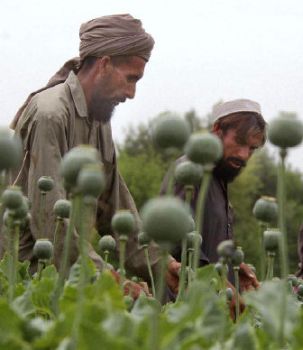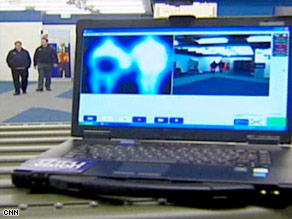Afghanistan now supplies over 90 percent of the world’s heroin, generating nearly $200 billion in revenue. Since the U.S. invasion on Oct. 7, 2001, opium output has increased 33-fold (to over 8,250 metric tons a year).
The U.S. has been in Afghanistan for over seven years, has spent $177 billion in that country alone, and has the most powerful and technologically advanced military on Earth. GPS tracking devices can locate any spot imaginable by simply pushing a few buttons.
Still, bumper crops keep flourishing year after year, even though heroin production is a laborious, intricate process. The poppies must be planted, grown and harvested; then after the morphine is extracted it has to be cooked, refined, packaged into bricks and transported from rural locales across national borders.
To make heroin from morphine requires another 12-14 hours of laborious chemical reactions. Thousands of people are involved, yet-despite the massive resources at our disposal-heroin keeps flowing at record levels.
Common sense suggests that such prolific trade over an extended period of time is no accident, especially when the history of what has transpired in that region is considered. While the CIA ran its operations during the Vietnam War, the Golden Triangle supplied the world with most of its heroin.After that war ended in 1975, an intriguing event took place in 1979 when Zbigniew Brzezinski covertly manipulated the Soviet Union into invading Afghanistan.
Behind the scenes, the CIA, along with Pakistan’s ISI, were secretly funding Afghanistan’s mujahideen to fight their Russian foes. Prior to this war, opium production in Afghanistan was minimal. But according to historian Alfred McCoy, an expert on the subject, a shift in focus took place. “Within two years of the onslaught of the CIA operation in Afghanistan, the Pakistan-Afghanistan borderlands became the world’s top heroin producer.”
Soon, as Professor Michel Chossudovsky notes, “CIA assets again controlled the heroin trade. As the mujahideen guerrillas seized territory inside Afghanistan, they ordered peasants to plant poppies as a revolutionary tax. Across the border in Pakistan, Afghan leaders and local syndicates under the protection of Pakistan intelligence operated hundreds of heroin laboratories.”


